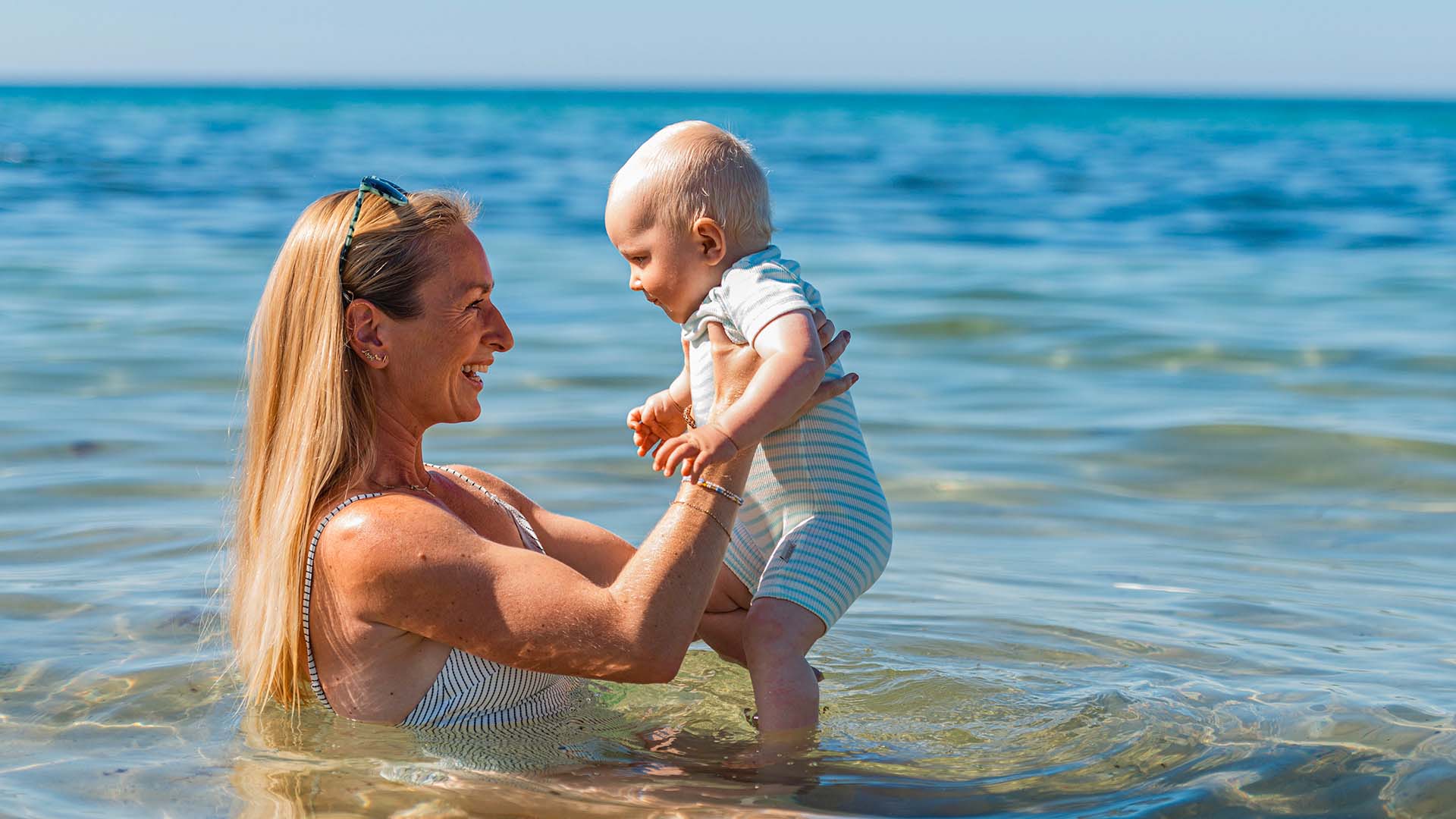Just as you childproof your home, it’s just as important to keep them safe from the harmful UV-rays to avoid immediate consequences like painful sunburns and more severe skin conditions later in life. But even though infants are more sensitive to sun exposure, we know that they love to just get out there and play, so why not just let them?
Why you ask? Their skin contains little melanin (the pigment that gives colour to skin, hair, and eyes), which provides protection from the sun. Instead, your first line of defense against skin damage is seeking shade and dress them in UV-protective clothing that covers their arms and legs. Then use a wide-brimmed hat that covers their face, neck, and ears – and use a stroller with a sun protective cover.
Once your baby is 6-month-old it’s time for sunscreen. Note: the shade and clothing are still super important! As the baby gets older, it’s only natural that you and your baby spend more time outdoors, and P20 KIDS will protect exposed skin, like hands and face. Once they become toddlers with that high energy that makes them hard to catch, you might need to be a little creative with the formulation of P20 sunscreen. P20 SPRAY+CONTINUOUS SPRAY is convenient for a quick application and with its fast-drying formular, it is less likely that the toddlers rub it in their eyes.
Furthermore, P20 Kids provides your children with a highly water-resistant sun protection. So, whether they are playing in the water at the beach, splashing around or swimming in the pool in the garden, they will be fully protected up to 3 hours in the water.

Good advice:
#1 Application made fun: The small coloured dots that can be found all over your body is either birthmarks or moles. They are essentially the same, but the main difference is that birthmarks is present at birth and moles develops over time. Most moles are completely non-dangerous and non-cancerous and comes in many shapes and forms: Brown, black, hairy, raised, large, small. But just like the rest of your skin, it’s oh-so important to protect your moles and birthmarks, as they can be damaged by prolonged exposure to UVA and UVB rays, which can lead to skin cancer. Broad Spectrum sun protection like P20 Sensitive Skin, will give you up to 10 hours triple protection all 365 days a year.
#2 Secound round of application: If you have freckles, you might have noticed that whenever the sun is out, your freckles are much more visible. The small, dark spots are skin cells that has produced extra pigmentation and are activated by sun exposure. Typically, people with the freckle gene (MC1R) have pale skin, but every human, regardless of skin colour, can be born with freckles.
Freckles serves a purpose, as they, in a way, act like sunscreens and naturally blocks the UV rays from penetrating deeper layers of the skin. But that must not fool you – if you have freckles, the UVA and UVB rays can still damage your skin, and you shouldn’t hesitate to use sun protection. Some people don’t mind their freckles, but others prefer to minimize them – especially in the face – due to the appearance of irregularities in their skin tone. A great way to protect your freckles is with P20 SENSITIVE FACE SPF 50+, which provides you with an all-day broad spectrum sun cream formulated specifically to protect face and neck from UV induced skin damage.
#3 An active day might call for an extra layer: They can occur due to hormonal changes, like pregnancy or aging – but in general will extended sun exposure accelerate the production of melanin (the pigment responsible for your skin colour) and cause sunspots. Most people want to prevent them forming throughout the summer. If you feel this way, you must practice the right protection techniques, and sunscreen is (stating the obvious) of great importance. Exposing your skin to the sun, getting a tan or a sunburn, will undoubtedly bring out depigmentation or sunspots. And if you are serious in your quest to prevent them from appearing you must wear sun protection every day and apply it generously and consistently. We recommend applying at least a handful of P20 FACE SPF 30 to your face alone. And if your neck, chest, arms, and legs are exposed, apply P20 to those areas as well.

